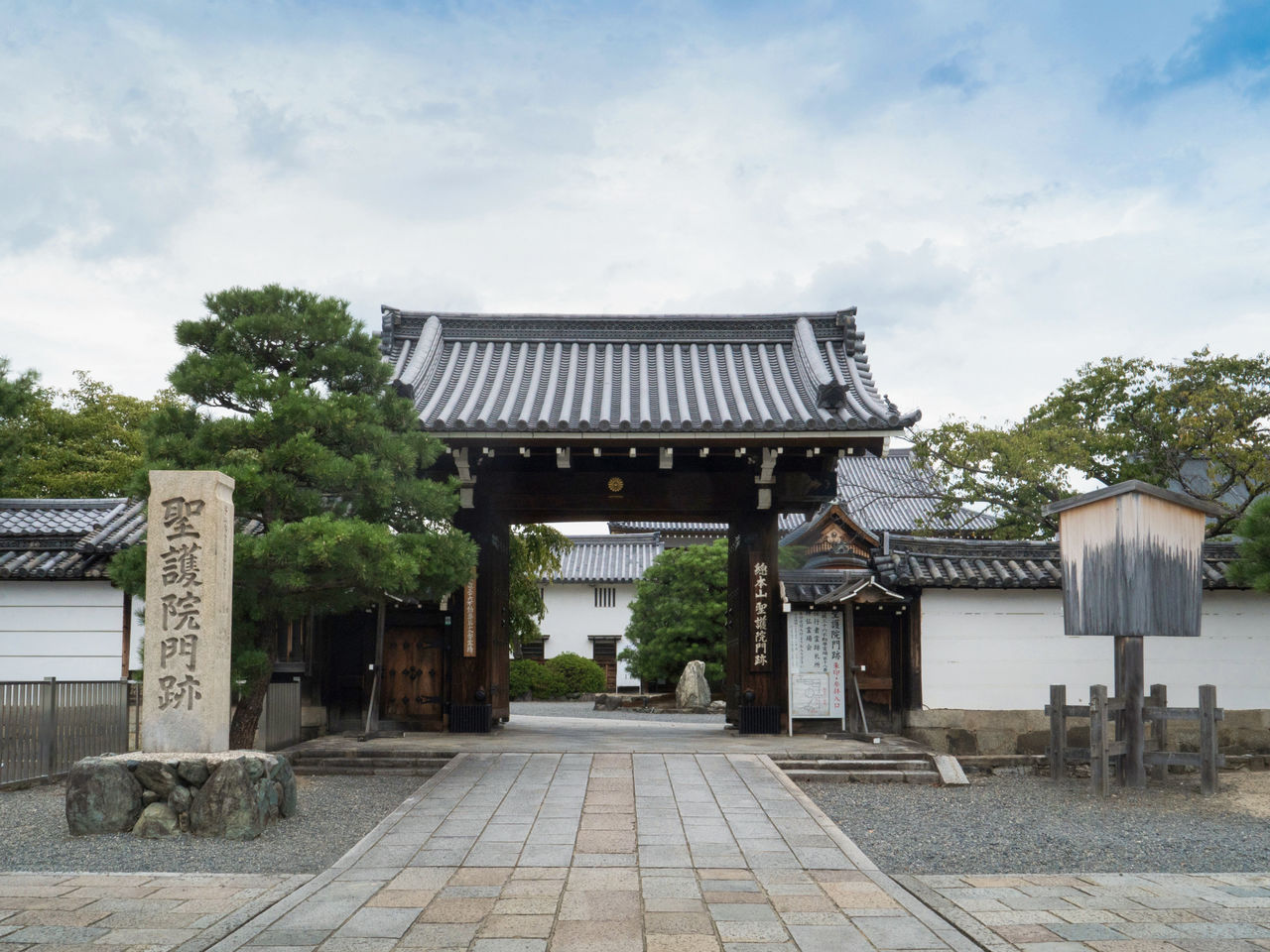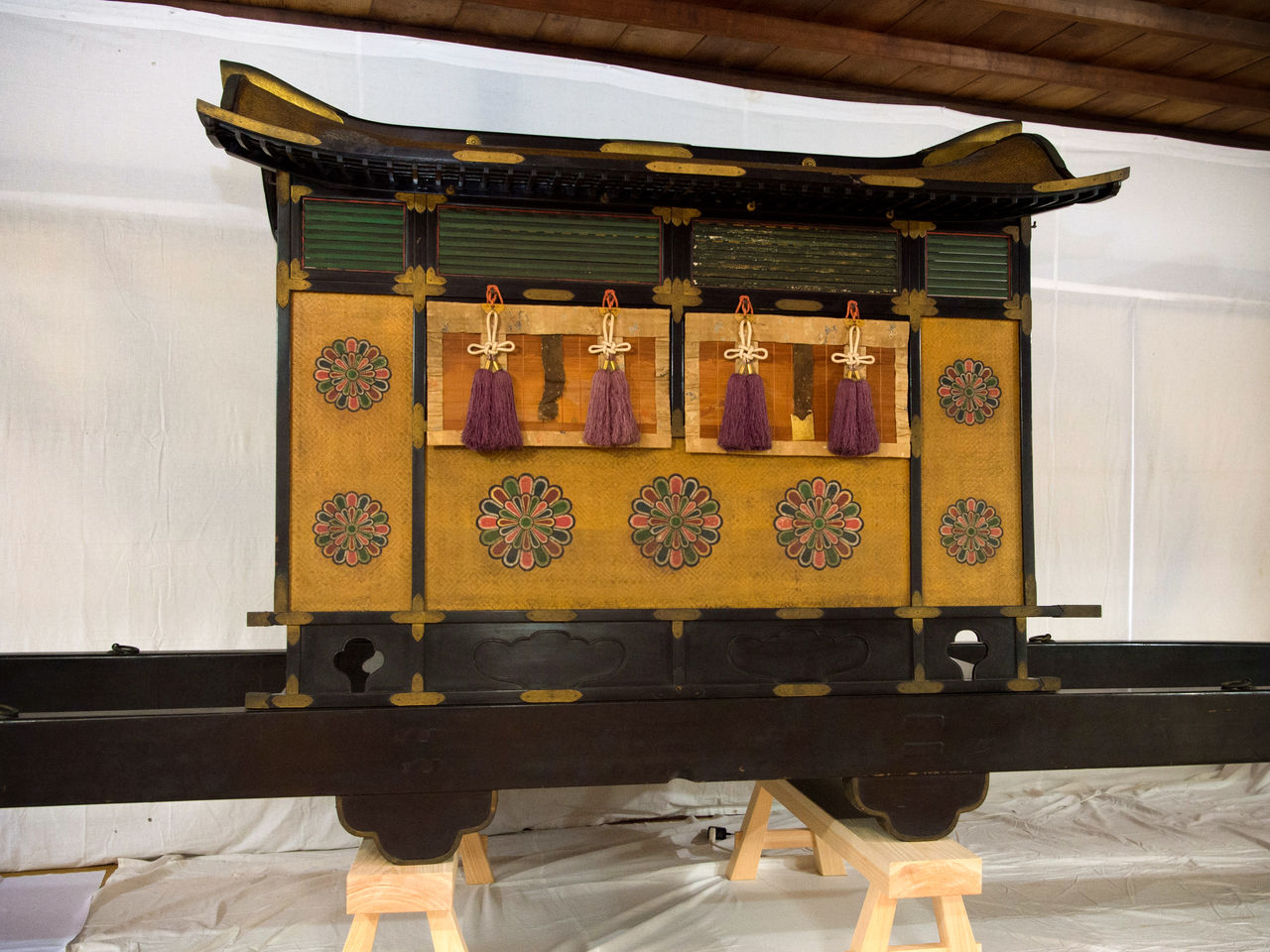
Shōgoin: Treasures of a Kyoto Imperial Retreat Now Open to the Public
Guideto Japan
- English
- 日本語
- 简体字
- 繁體字
- Français
- Español
- العربية
- Русский
A Venerable Temple with an Imperial Pedigree
Located in Sakyō-ku, Kyoto, Shōgoin is the head temple of Shugendō, an ascetic sect of Japanese Buddhism. It also has special status as a former monzeki temple traditionally headed by members of the imperial family and other nobles.
Shōgoin is said to have been founded by the ascetic priest Zōyo (1032–1116), who was gifted with a temple for his service as guide to the retired emperor Shirakawa on a pilgrimage to the Kumano Sanzan shrine complex in 1090. Zōyo named the temple Shōgoin, which means “Protector of the Emperor.” Thereafter, members of the imperial family and related nobility served for generations as the head priests of Shōgoin, right up to the Meiji period (1868–1912). When the imperial palace in Kyoto was ravaged by the Great Tenmei Fire in 1788, the Emperor Kōkaku (r. 1780–1817) took up temporary residence in Shōgoin.
Despite this history, the name Shōgoin is more likely to bring to mind for many not the temple, but the popular traditional cinnamon-flavored cracker-like cookie Shōgoin Yatsuhashi, or the locally produced Shōgoin daikon radish and Shōgoin kabu (turnip). One of the reasons the temple itself is not so well known is that it was for a long time closed to general visitors and could only be viewed by appointment. The recent annual openings to the public, however, have made the temple’s rich history and treasure trove of art more readily available.
 A carefully raked sand garden.
A carefully raked sand garden.
An Elegant Chamber for Official Imperial Duties
A rich array of more than 100 gold fusuma sliding doors stand out among Shōgoin’s many treasures. The first sight for visitors at the foyer of the temple’s main entrance are a pair of powerful old pines painted by two major Kanō school artists, Kanō Einō (1631–97) and Kanō Masunobu (1625–94).
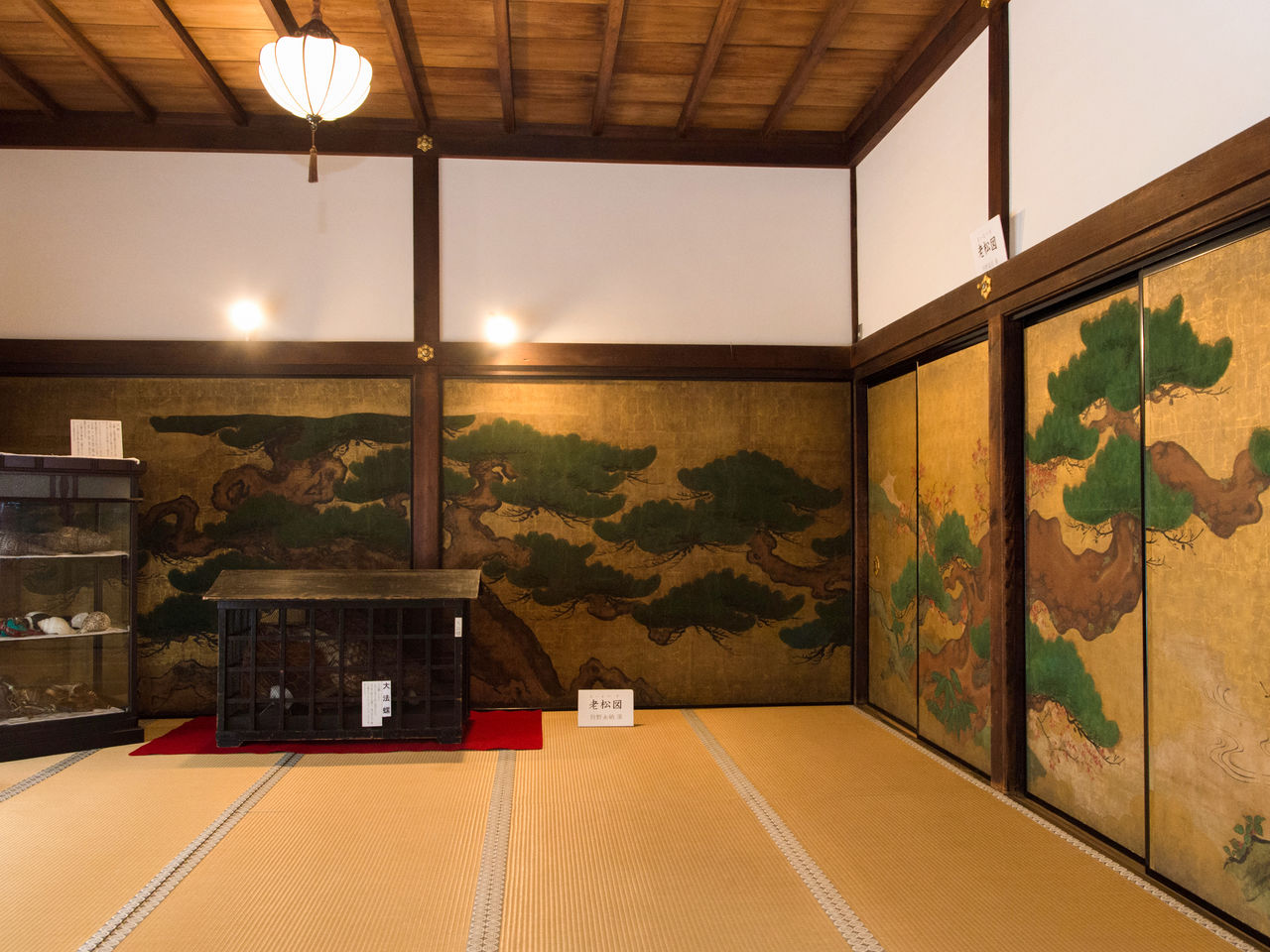 The main entrance foyer. To the left is a display shelf of conch shell trumpets once used by the temple’s ascetic monks.
The main entrance foyer. To the left is a display shelf of conch shell trumpets once used by the temple’s ascetic monks.
Shōgoin’s main entrance foyer also serves as entryway to the Shinden, the temple’s primary building and inner sanctum reserved for imperial duties, a feature typical of monzeki temples. The Shinden has more than 15 rooms named after the paintings on their sliding doors, such as Kujaku no Ma (Peacock Room), Taikōbō (Fisherman’s Room), and Nami no Ma (Room of Waves). These paintings are the work of Einō, who compiled the 1691 Honchō gashi, the earliest history of Japanese painting, and Masunobu, the adopted apprentice of the great painter Kanō Tan'yū (1602–74).
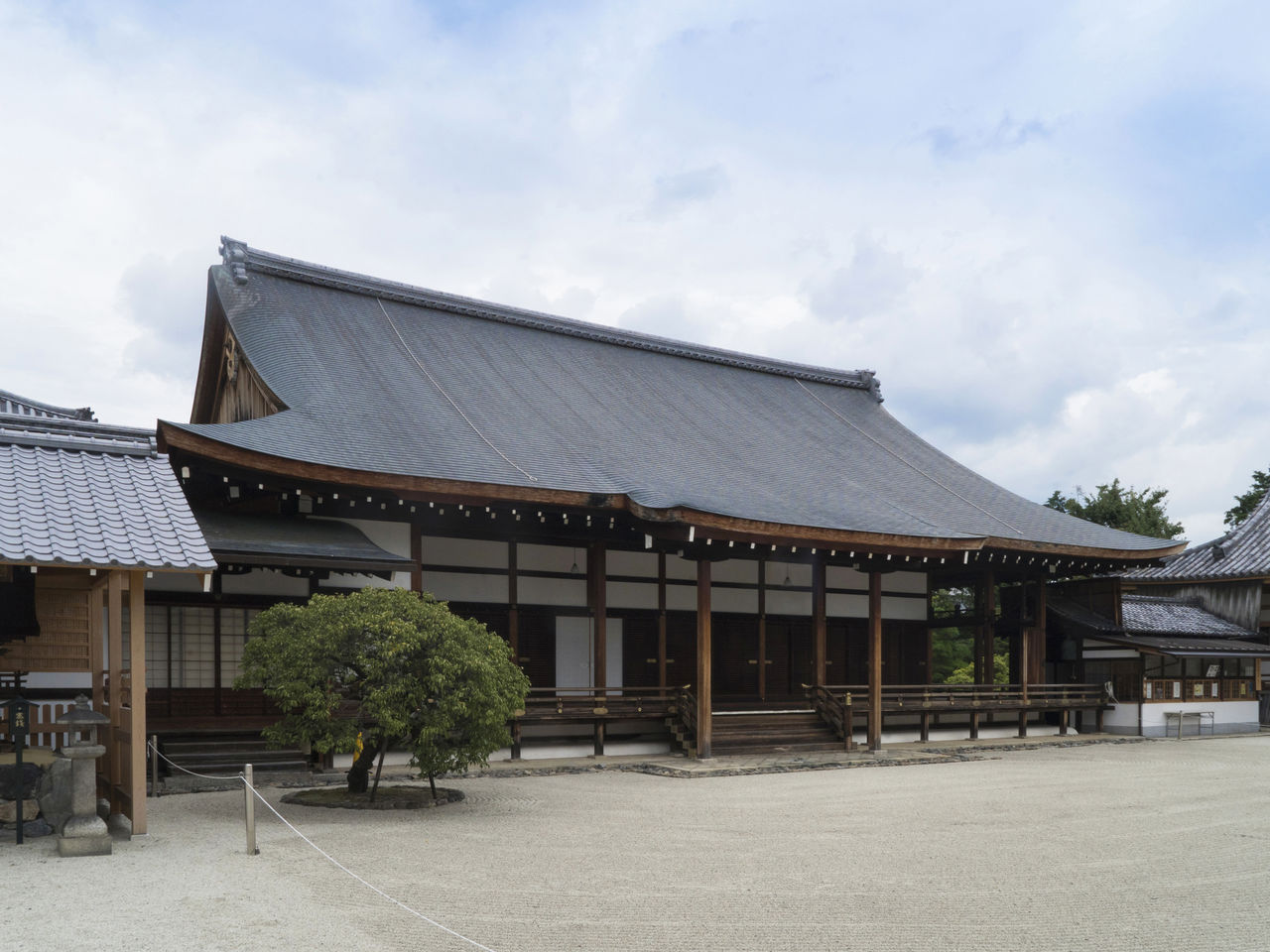 The Shinden was built in the late seventeenth century.
The Shinden was built in the late seventeenth century.
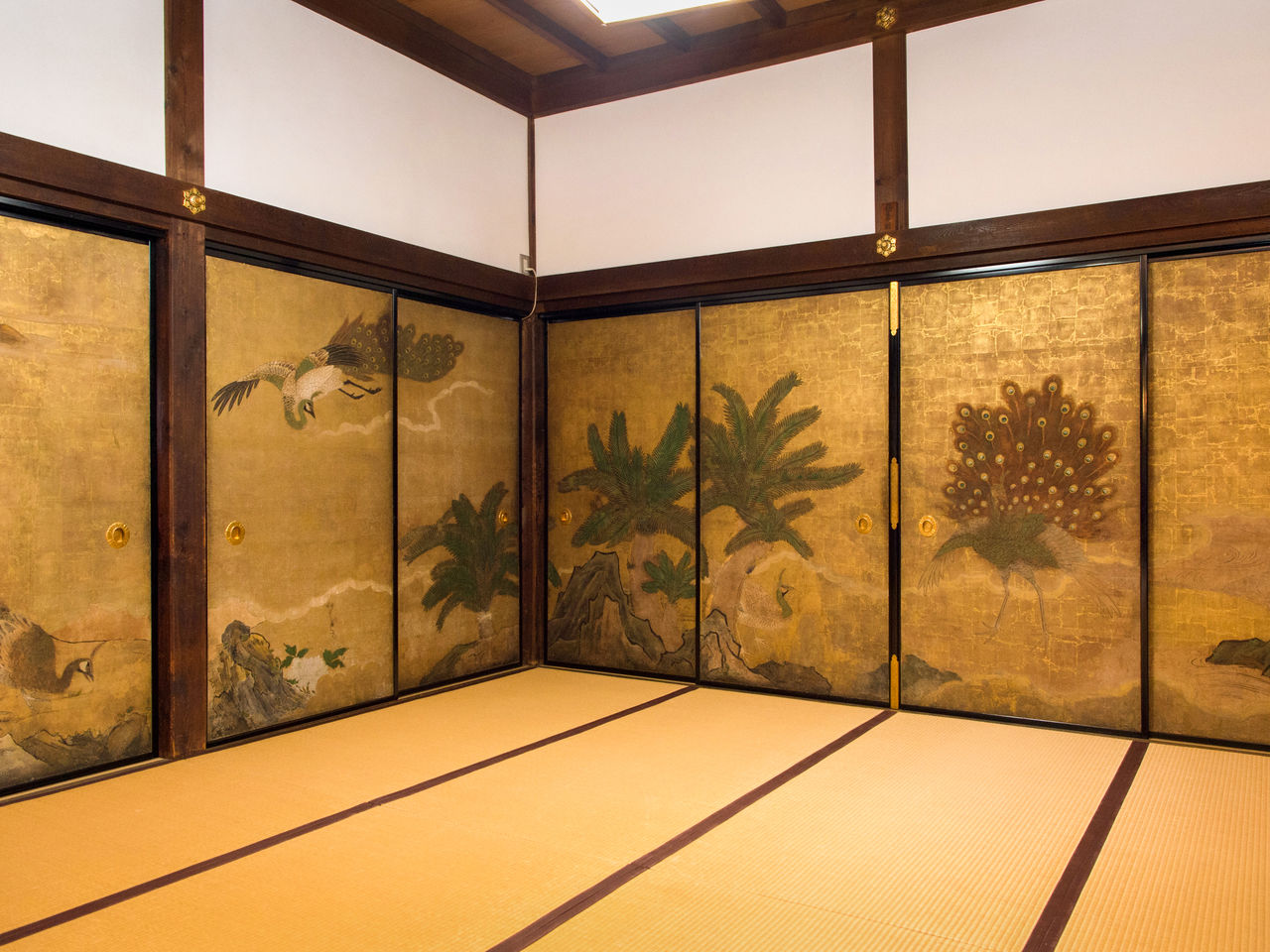 The artwork on the sliding doors of the Kujaku no Ma (Peacock Room).
The artwork on the sliding doors of the Kujaku no Ma (Peacock Room).
A series of rooms extending from the Shinden hallway lead up to a dais where the Emperor Kōkaku held audience and carried out his imperial duties. Kōkaku took up residence at Shōgoin in 1788 after fire made the nearby imperial palace unlivable. The sliding doors in the room leading up to the last imperial chamber are decorated with elegant paintings of seasonal birds and flowers by Masunobu.
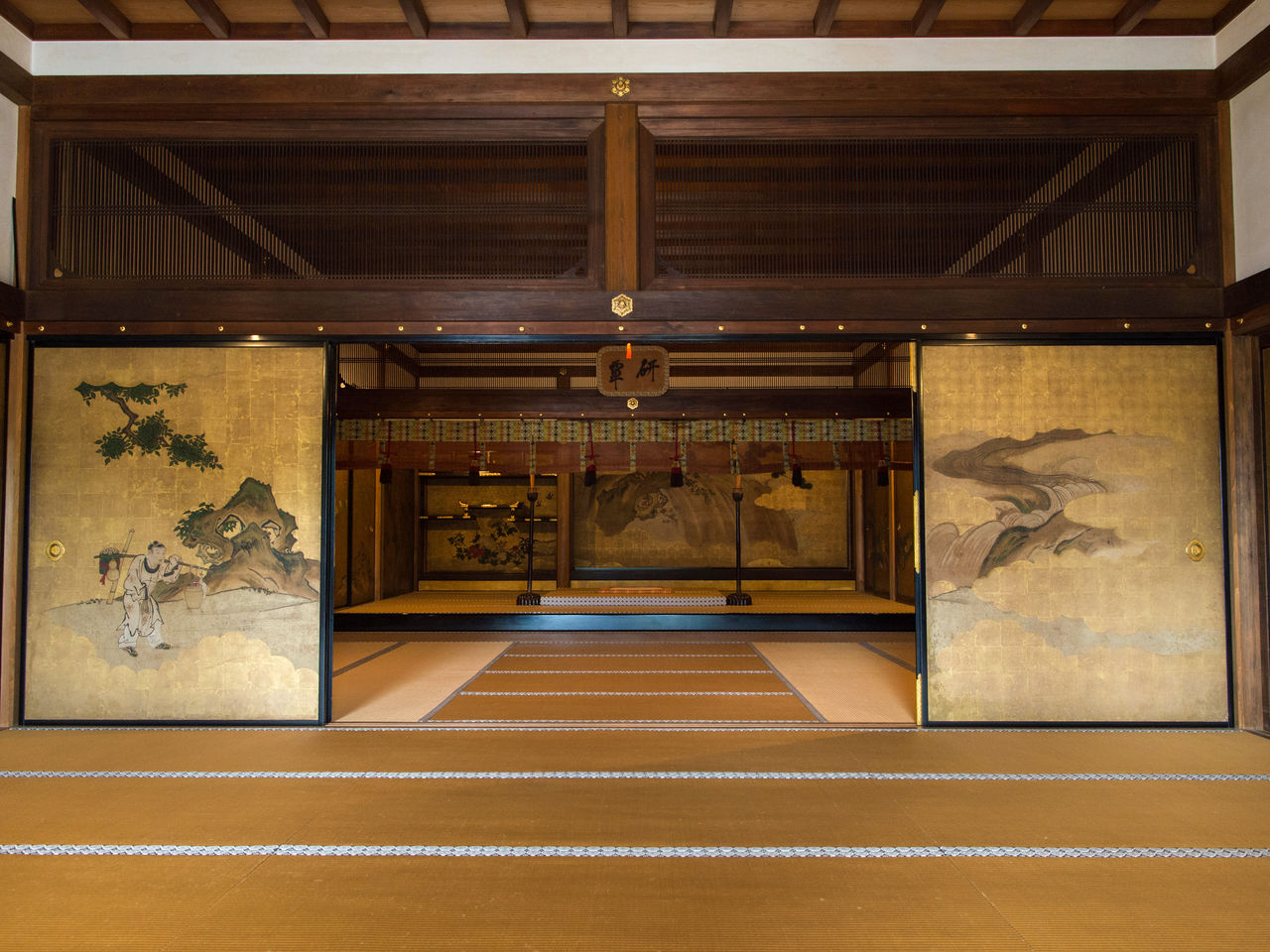 View of the imperial dais from the Shinden hallway.
View of the imperial dais from the Shinden hallway.
Above the imperial dais is a framed work of calligraphy by the Emperor Gominoo (1596–1680). The two characters 研覃, read ken tan, mean, “Polish yourself and till the field of your soul,” explains Miyagi Taigaku, Shōgoin’s chief priest. The rounded corners of the frame, he continues, are also an admonition to soften one’s sharp corners so as not to hurt other people.
This spirit of consideration for peaceful coexistence is expressed as well in the small holes cut into the ranma transoms above the sliding doors. These holes are meant to allow passageway to mice so that they will not chew through the painted fusuma sliding doors below.
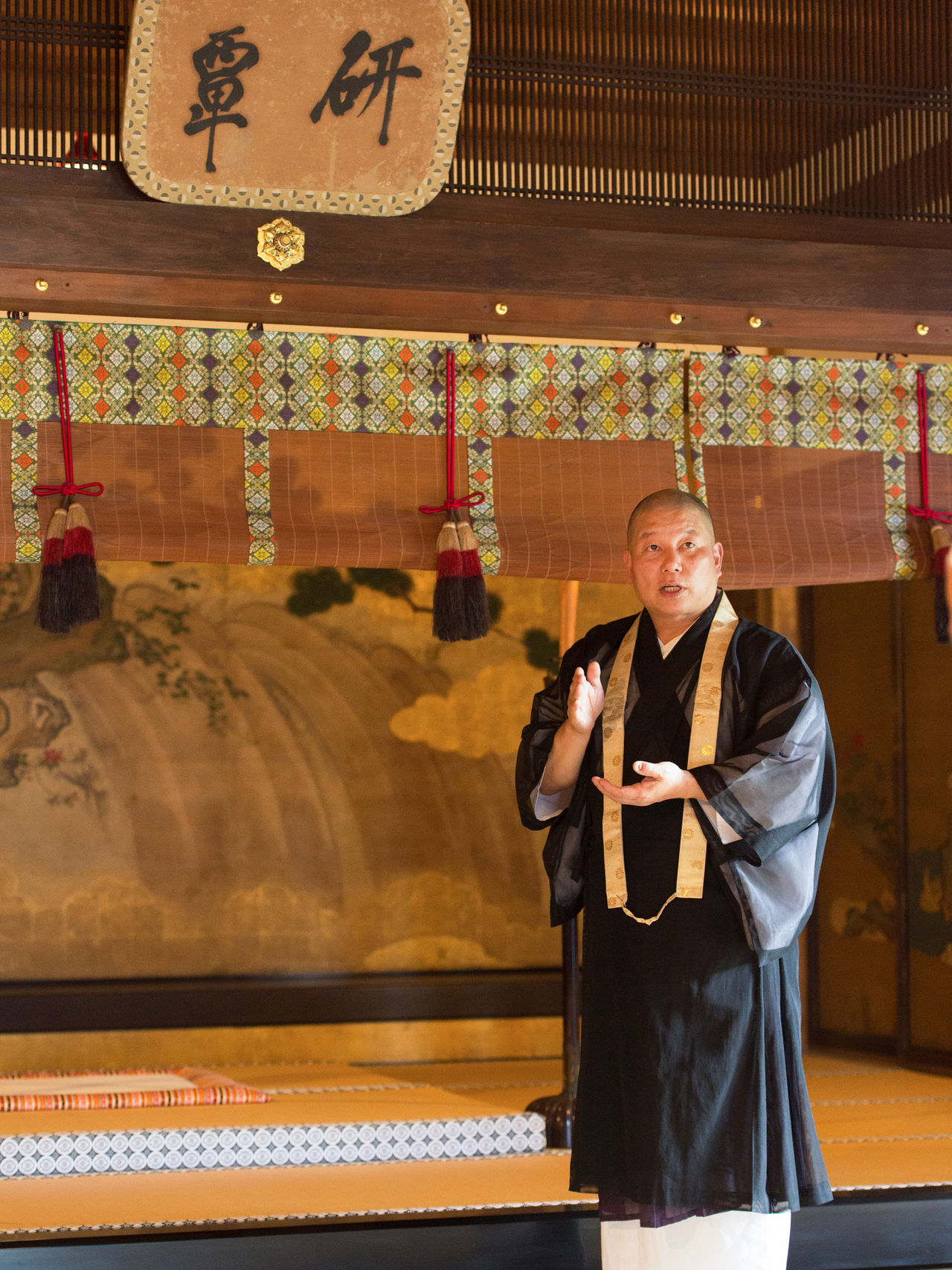 Chief priest Miyagi Taigaku explains the framed calligraphy.
Chief priest Miyagi Taigaku explains the framed calligraphy.
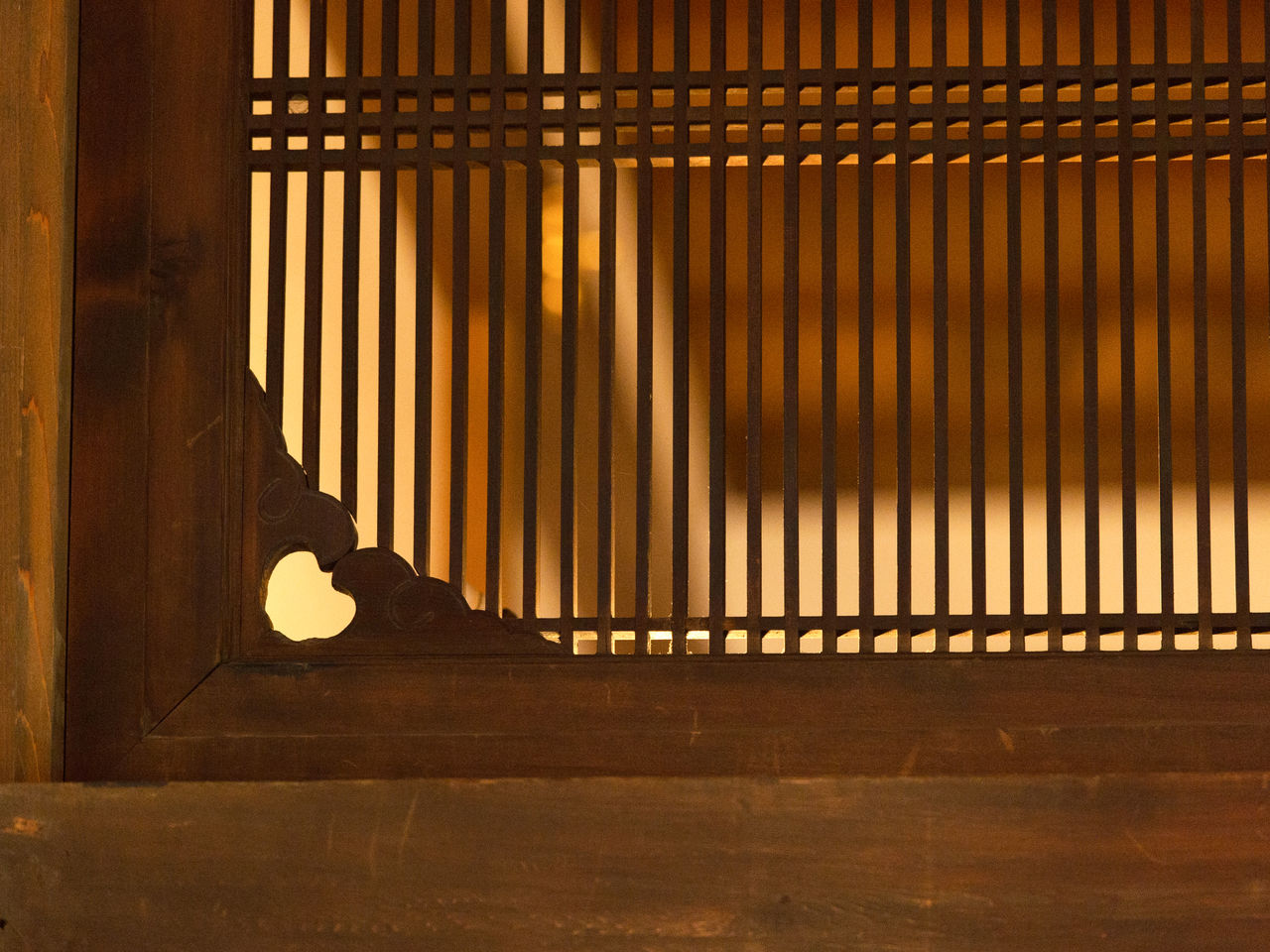 The small hole for mice is another symbol of the importance of peaceful coexistence.
The small hole for mice is another symbol of the importance of peaceful coexistence.
Fierce Statues and a Shoin Built in Love
Shōgoin’s altars are housed in the inner sanctuary, a room that was used prior to the Meiji period as a place to school members of the nobility in the ceremonies of the imperial household. Today, the chamber is dominated by a statue of En no Gyōja, the legendary founder of Shugendō, and various auxiliary Buddhist statues of significance to the Buddhist sect.
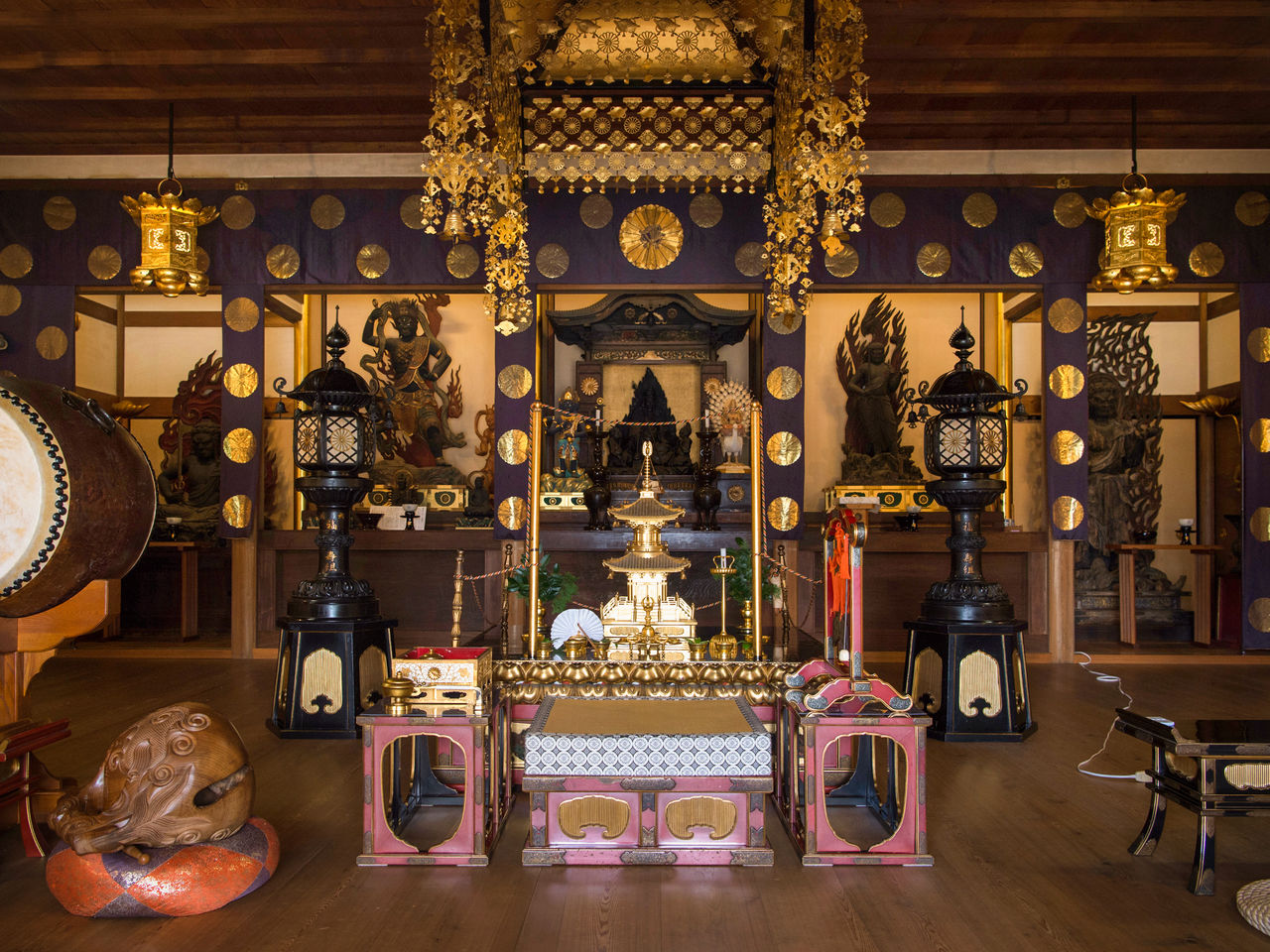 The alter dedicated to En no Gyōja, the founder of Shugendō.
The alter dedicated to En no Gyōja, the founder of Shugendō.
Notable are the statues of Fudō Myōō guardian deities, holding swords in their right hands and ropes in the left. Of fierce yet melancholy demeanor, these deities impart wisdom to people, cutting away misfortune and worldly desires with their swords and capturing and throwing the remnants into the surrounding flames with their ropes.
Says Miyagi, “The expressions on these figures are much like that of a mother thinking always of how best to raise her children and imbue them with correct wisdom. These faces speak to us of stern parenthood, standing ready to scold us when we need it.
The Fudō Myōō can be viewed during the annual special opening of the temple.
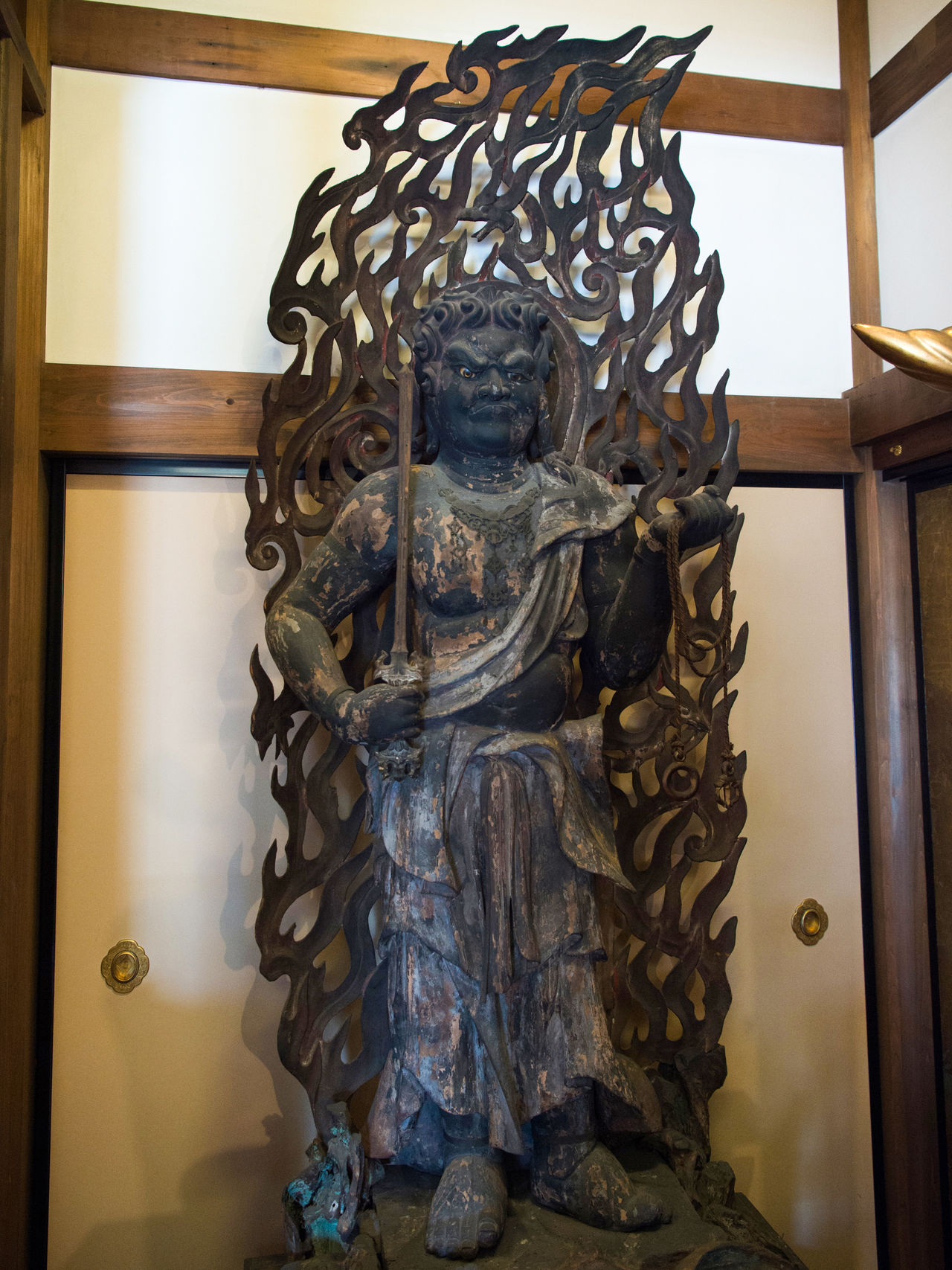 A Fudō Myōō statue carved in the Muromachi period (1333–1568) stands in the inner sanctum.
A Fudō Myōō statue carved in the Muromachi period (1333–1568) stands in the inner sanctum.
An open passageway connects the Shinden to the Shoin, originally a residence built for Kushige Takako, beloved consort of the Emperor Gomizunoo, and later relocated to Shōgoin. Features of this building include mairado sliding doors made of single wooden panels set in a timber frame and held in place by thin crosspieces of wood, a delicate and graceful roof, and orebumi nail cover ornaments representing love letters.
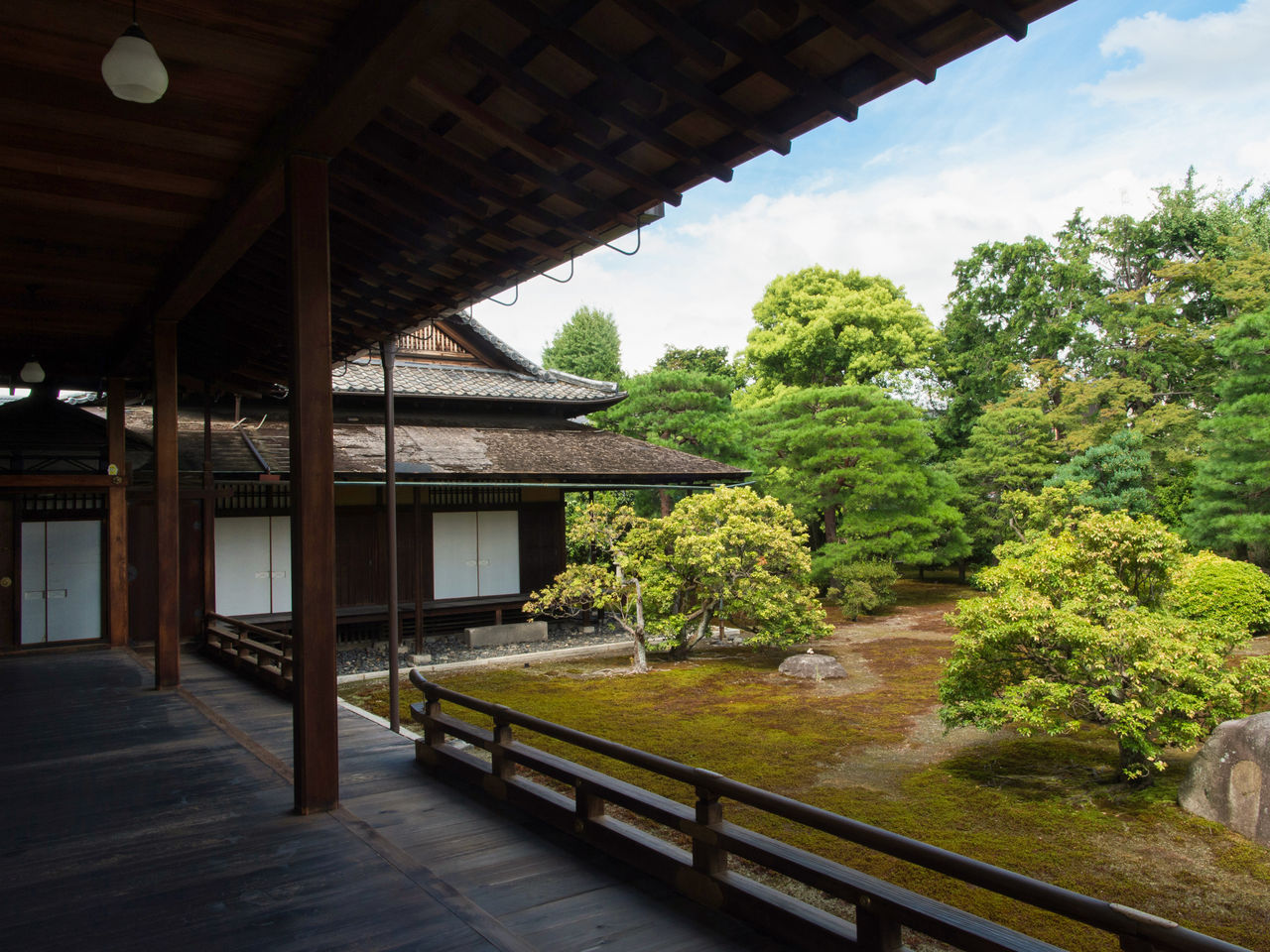 Moved to Shōgoin in 1676, the Shoin is a designated important cultural property.
Moved to Shōgoin in 1676, the Shoin is a designated important cultural property.
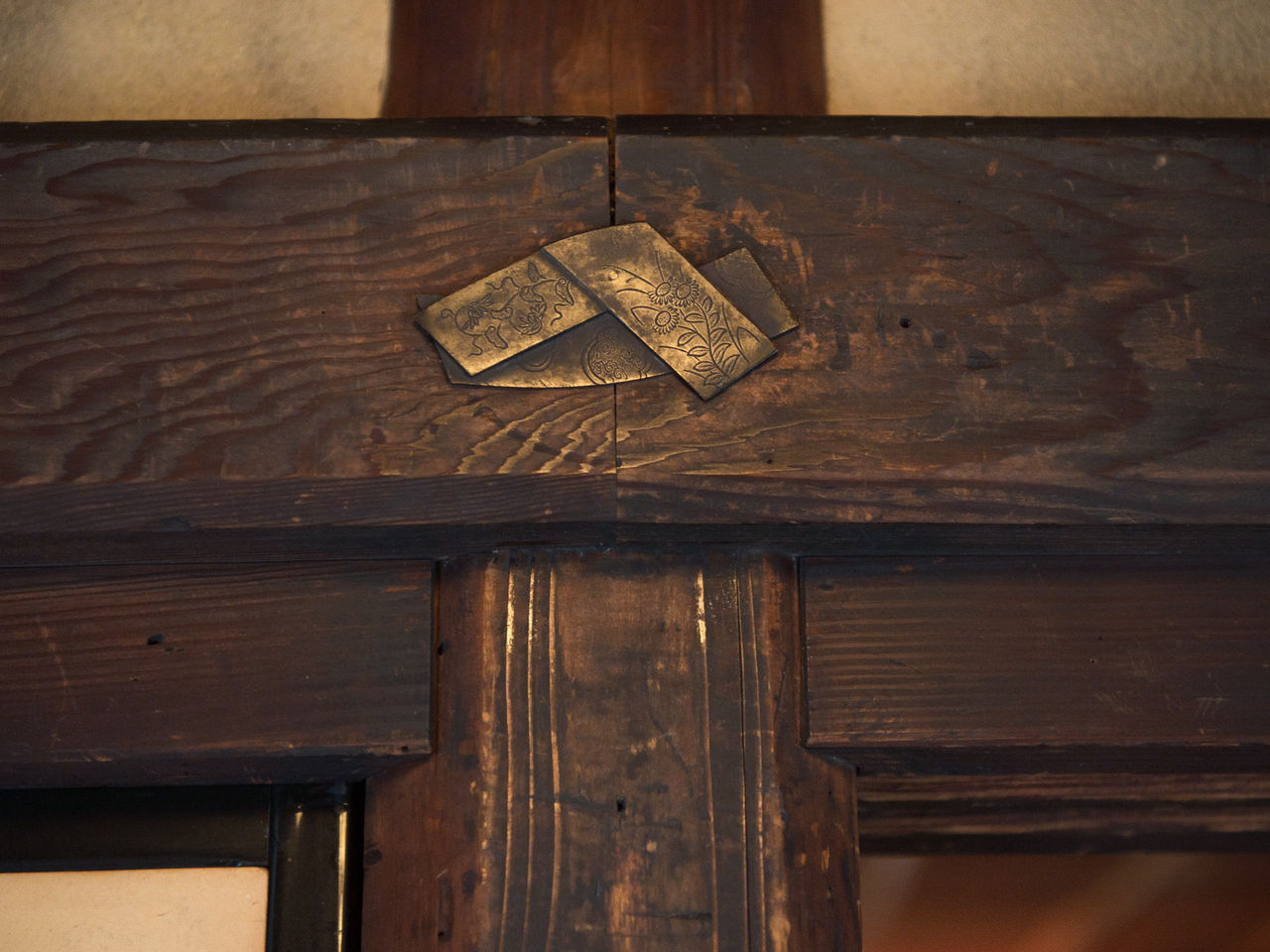 A nail cover ornament in the shape of a folded love letter.
A nail cover ornament in the shape of a folded love letter.
A special feature of the Shoin is a lovely window inset with glass panes, a rare and expensive item. The right pane, as viewed from inside, is the original crystal glass. Its high iron content gives the glass a seductive liquid quality.
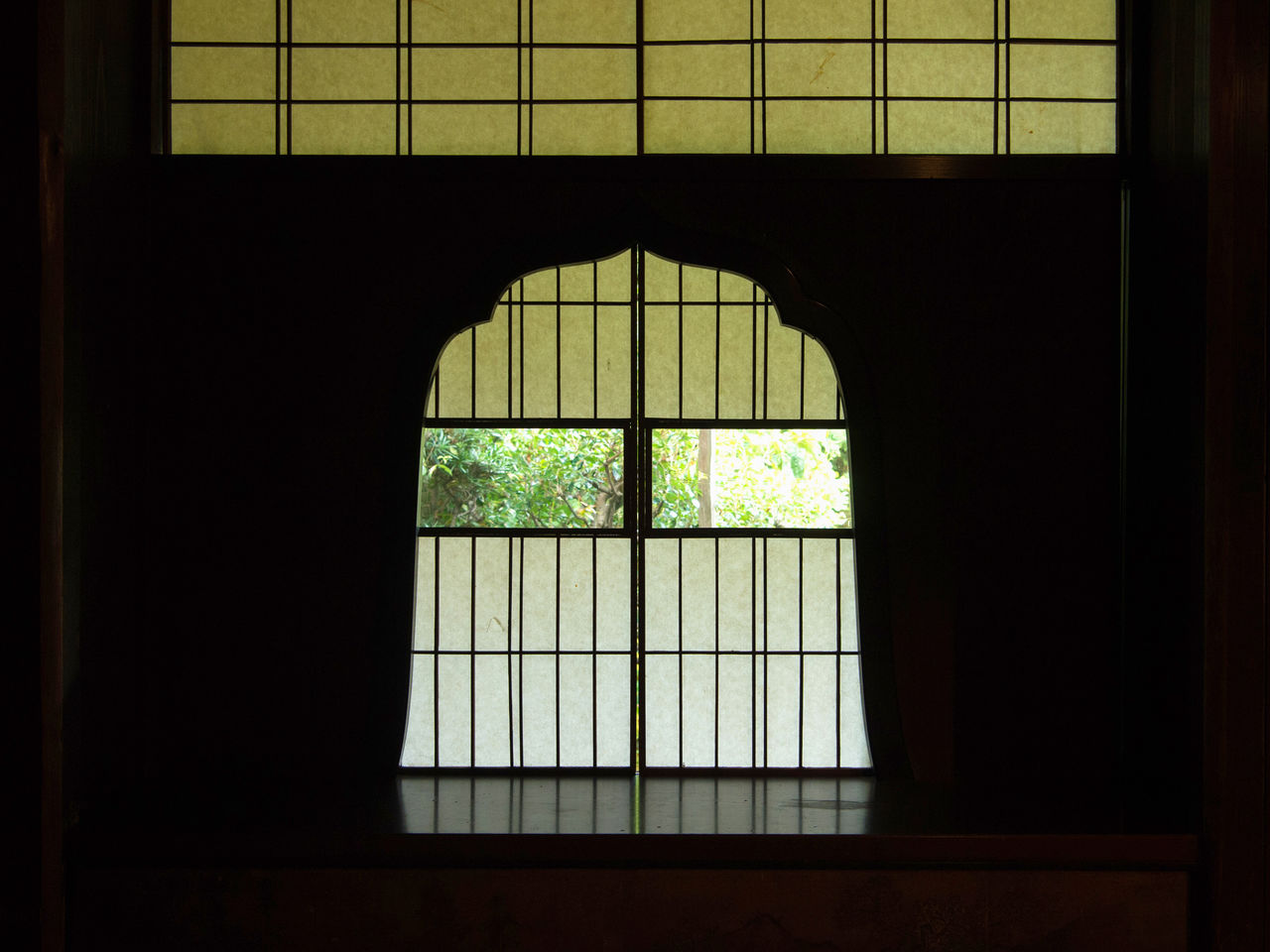 The Shoin’s elegant window in the curved katōmado style is inset with rare glass panes.
The Shoin’s elegant window in the curved katōmado style is inset with rare glass panes.
As you can see, Shōgoin is so much more than the local sweets and vegetables that bear its name. Take this special opportunity to see for yourself the temple’s rare Kanō school paintings and the Shoin built by an emperor for his favorite consort, and directly experience the solemnity and mystery of the temple’s Buddhist statuary and Shugendō mystique and asceticism.
2018 Shōgoin Special Opening
- Address: 15 Shōgoin Nakamachi, Sakyō-ku, Kyoto
- On display: More than 100 sliding doors painted by Kanō Einō and Kanō Masunobu; important cultural treasures such as the Fudō Myōō statues in the main sanctuary and the Shoin; and Emperor Kōkaku’s palanquin
- Open: September 15 to November 25, 2018 (closed October 11 to 15 and October 29)
- Hours: 10:00 am to 4:00 pm (last entry)
- Fees: Adults ¥800, junior and senior high and university students ¥600, and elementary and younger children free (must be accompanied by an adult)
(Banner photo: Painted sliding doors opening to the imperial dais. Reporting and text by Fujii Kazuyuki, 96Box. Photographs by Kuroiwa Masakazu, 96Box.)

